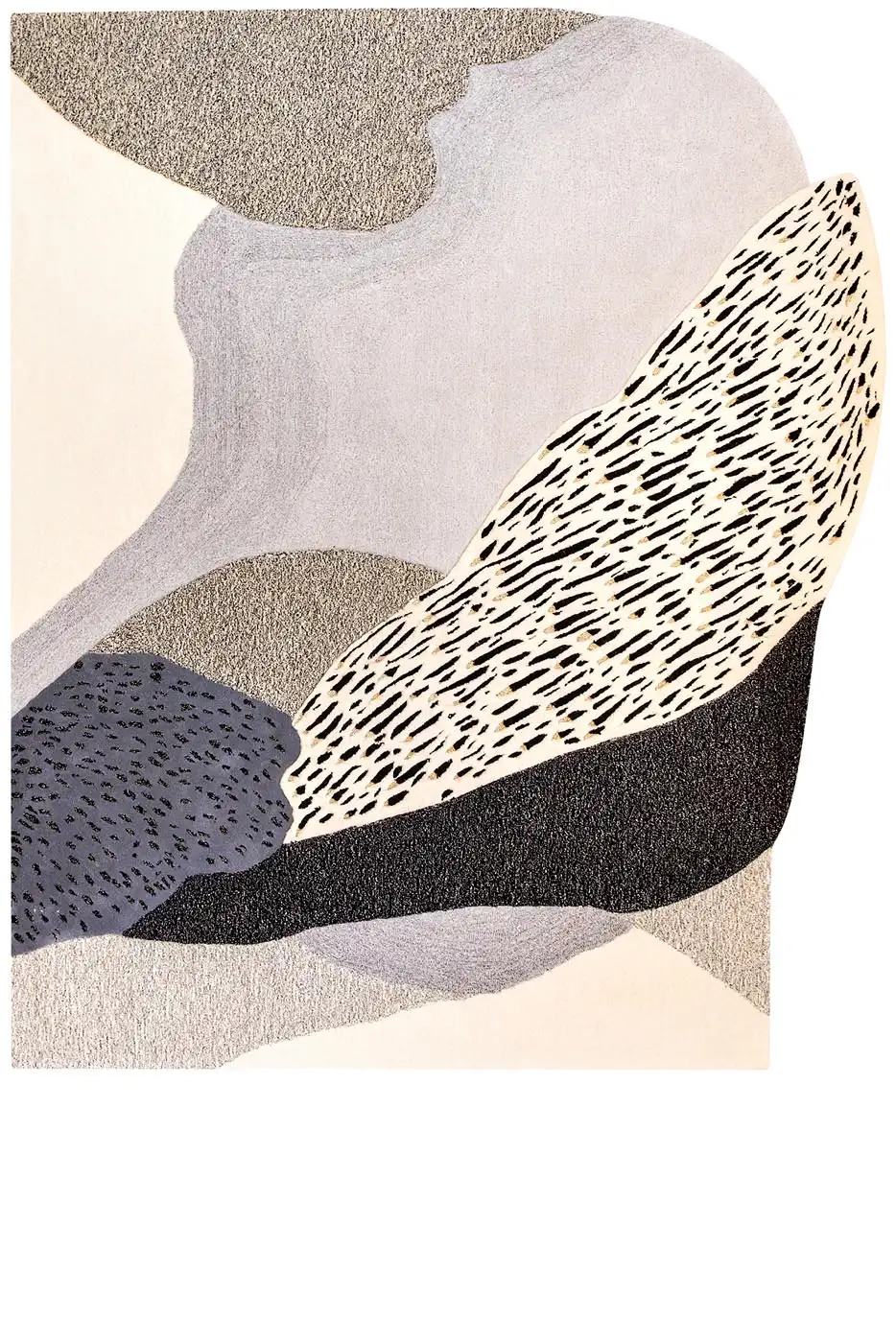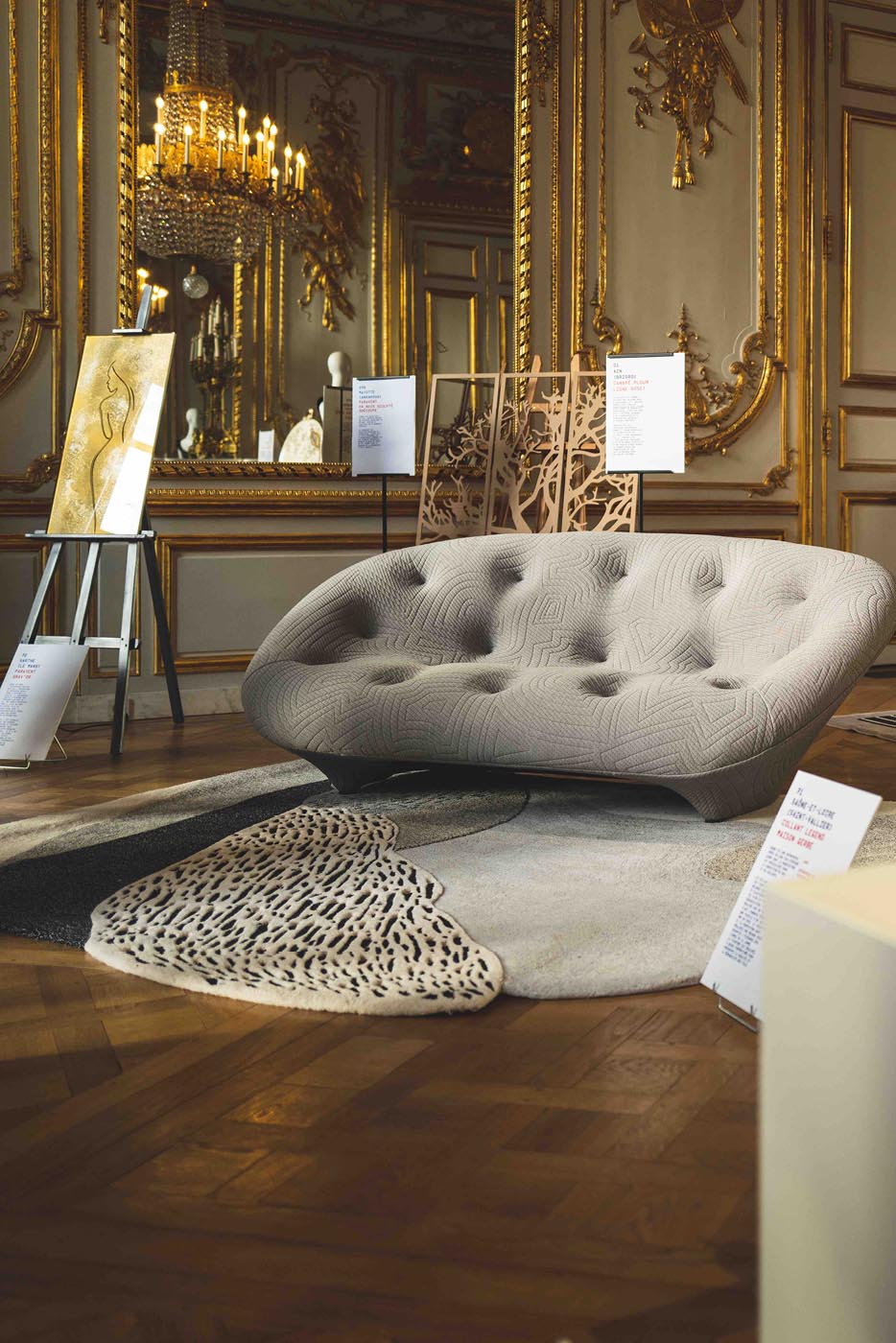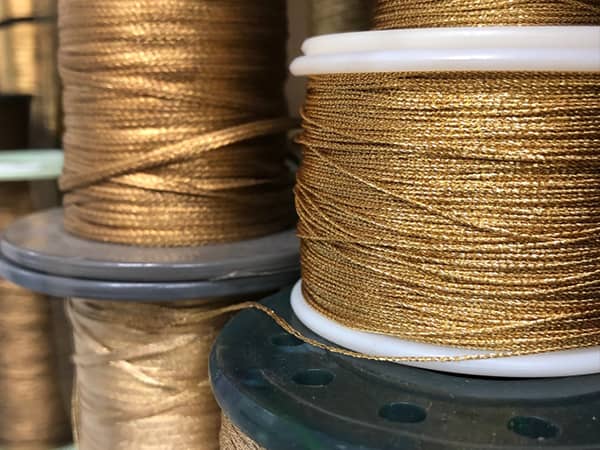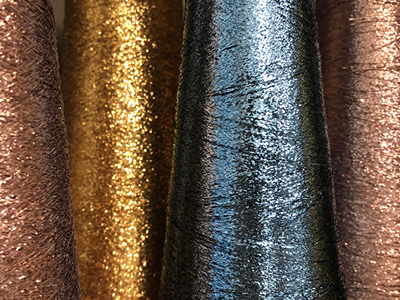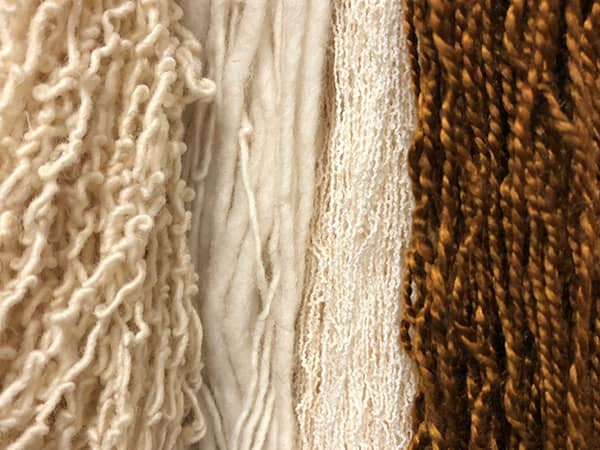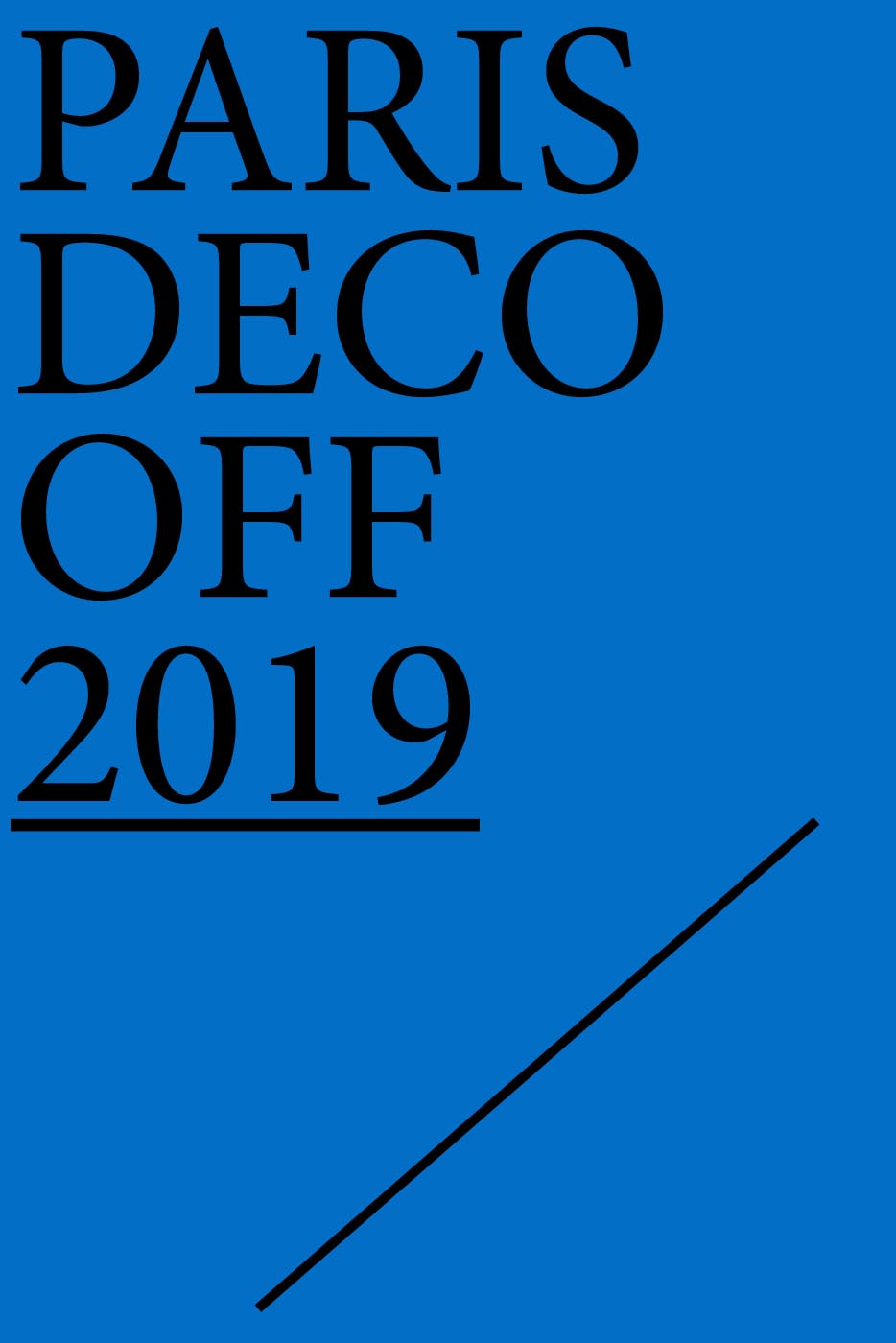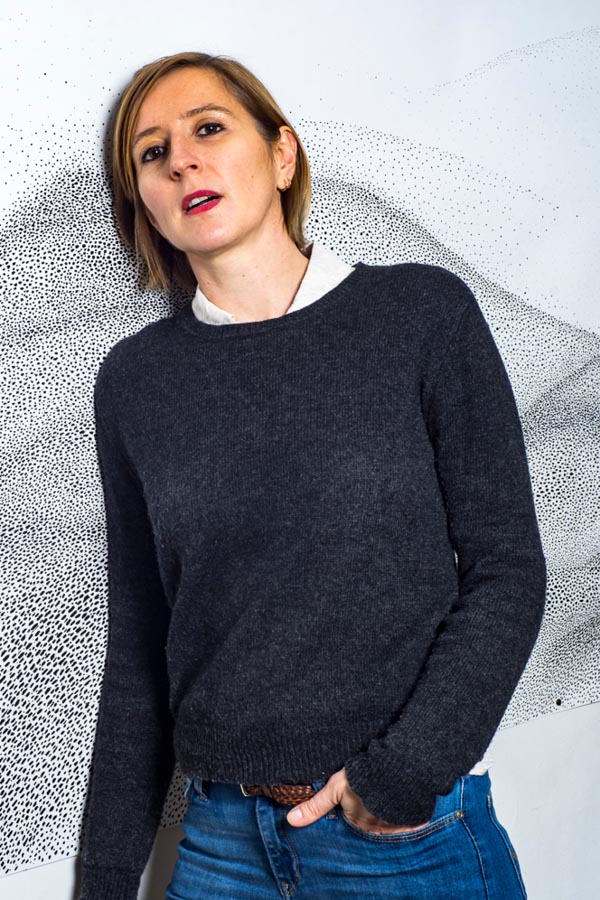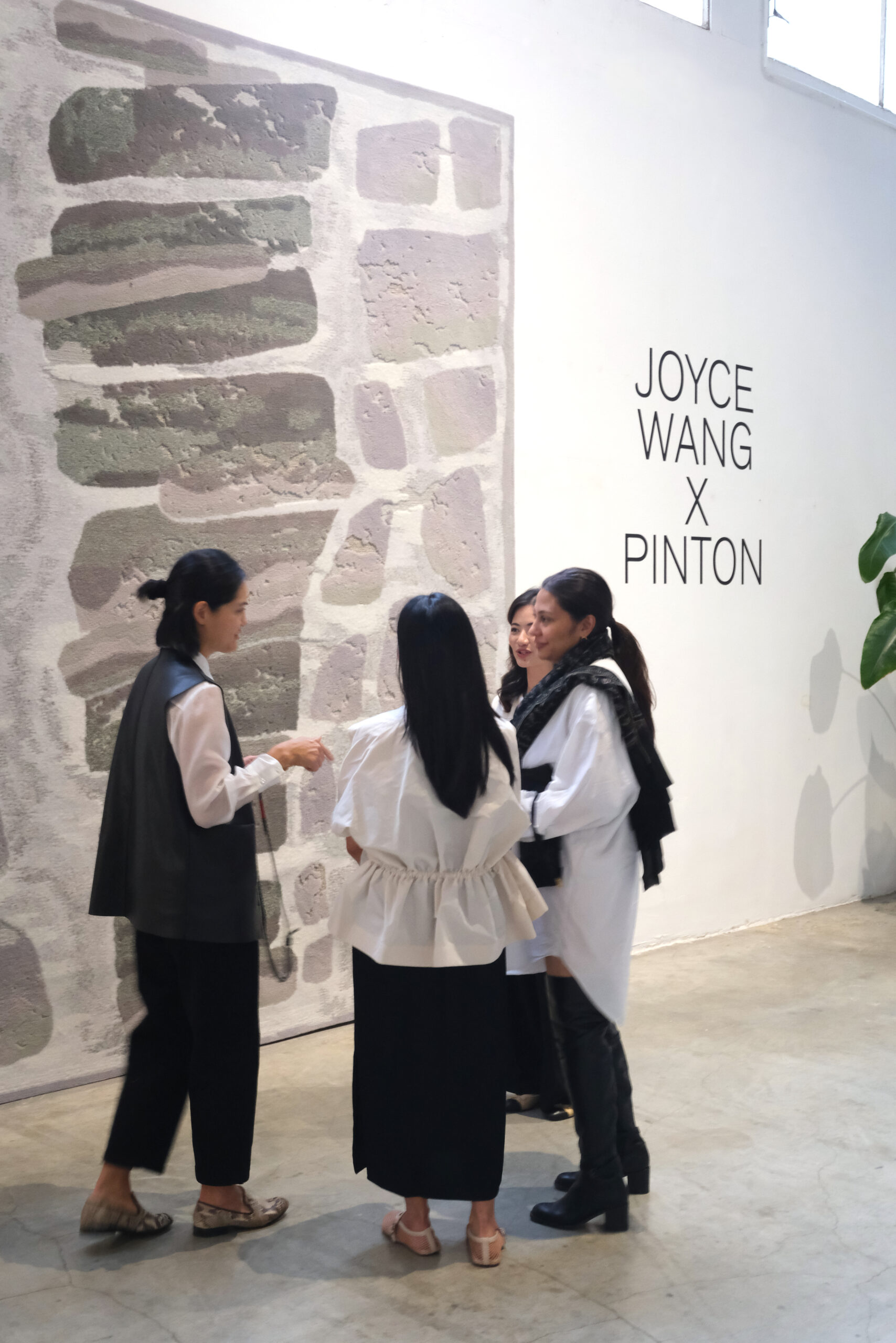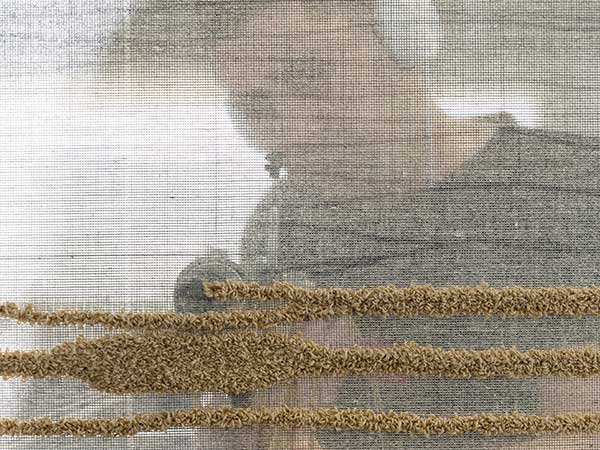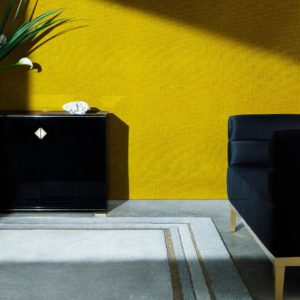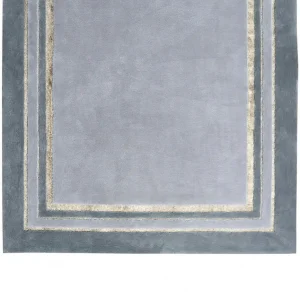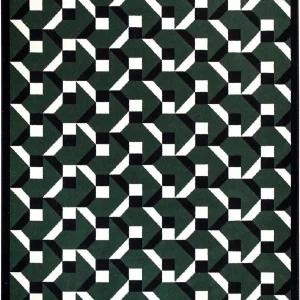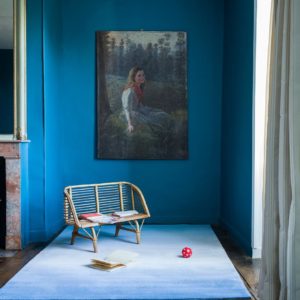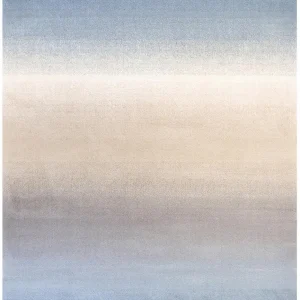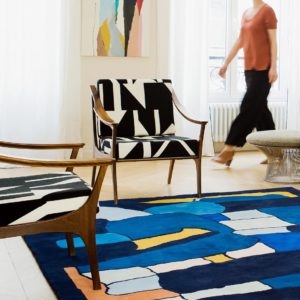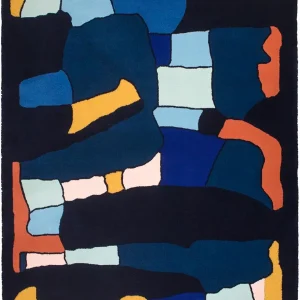Effusion
by ALIX WALINE
HAUTE COUTURE
MATERIALS Wool, Lurex, Metal threads
TECHNIQUE Hand tufted
SIZE 211 x 251 cm
PRICE ON REQUEST. CONTACT US.Out of stock
Description
metal threads
A few thousand years before Christ, Roman, Chinese, Persian and Egyptian craftsmen used to cover in gold leaf the threads that they were going to weave for the rich and powerful. Later, weavers used gold and silver threads to embellish tapestries woven out of wool or silk. These threads were difficult to work and extended production times. They required particular skills, passed from generation to generation. From the XVIIth century onward, new techniques made it possible to create very fine metal threads able to go through fabric. Today, the metals used with textile fibres are silver, gold and copper, but also aluminium, iron or stainless steel, and come in every colour. In PINTON’s Couture collection, these fabulous threads are inserted alongside traditional wool or silk yarns, to create poetic and graphic pieces imagined in partnership with contemporary artists and designers.
lurex
Metallic, shiny or glittering effects have always fascinated, symbolically associated with light, sun and sophistication. The invention of Lurex dates back to the XXth century, to 1946 to be precise. A polyester textile thread coated in a layer of metal to produce a shiny or shimmering look, Lurex is a light and flexible thread that comes in a large palette of colours. “Threads made for designers” is one of the main slogans of the company that registered the Lurex trademark. Indeed, since its invention this fibre has been inspiring both fashion and decorative art designers to create extravagant, subtle and elegant pieces. Combined with other materials in the production of PINTON rugs, Lurex does not diminish their softness. It gives them a touch of sophistication and chic, with understated patterns and delicate and infinite light reflections.
wool
Wool is an animal fibre, most often derived from sheep fleece. Wool was already being spun as early as 5,000 BC. In Roman times, wool, leather and linen were the main materials used to make clothes. With the progressive development of mechanical processes and the evolution of breeding techniques, wool became the economic lung of several countries in the Xth century, and again in the XIIth. Renowned for its thermal and sound insulation properties, wool also offers the advantage of absorbing moisture. It is a noble and timeless material, used from time immemorial for its strength and durability. PINTON uses local wool with shorter carded fibres, which make it fluffier and give it more volume, or a specific type of wool from New-Zealand with long combed fibres that are more resistant to heavy traffic. Both types of wool are spun (carded or combed) and dyed in the spinning plant located in Felletin. Whether they are made in 100% pure virgin wool or blended with other materials like linen, silk, bamboo, leather or many others, PINTON wool rugs and carpets bring comfort and quality.
Alix Waline
After studying at the Ecole des Beaux-Art and the Sorbonne in Paris, Alix Waline took textile design classes at the Ecole de La Cambre in Brussels. During a stay in Thailand she experimented with large scale in-situ drawing, appropriating space to push boundaries. She took part in many collaborations, including with the Gilles&Boissier agency for several restaurants, the Chess Hotel in Paris and the Moncler shop in Séoul, as well as numerous residential projects. At the same time, she continued drawing on different media. For Gilles&Boissier Privé she created one-off lampshades and worked with Sabatina Leccia on a collection of drawings and embroidered cushions. She also designed a very graphic wallpaper published by Chiara Colombini and shown at the Salone del Mobile in 2016. Alix Waline is represented by Thierry Kauffmann.
For PINTON, Alix Waline created a bespoke carpet, beautifully named Ondoiement, and two luxury rugs, Effusion for the Couture collection and Expansion for the Diffusion line, perfect illustrations of Alix’s highly emotional vision. In 2019, PINTON chose the Paris-Déco-Off trade fair to unveil the product of this first collaboration.
hand tufted
The hand tufting technique is a process combining centuries-old skills and modern weaving tools. The canvas is perfectly stretched over an upright loom and the craftsperson transfers by hand the future design of the rug with the utmost precision. Threads are inserted manually, one by one, working with a gun on the back of the canvas, following the colours, the drawing and the different tuft heights. PINTON was one of the first manufactories to use the gun tufting technique to produce some of its rugs and carpets and is the only French workshop offering very high quality tufted rugs. With this technique, production times are reduced compared to the knotted stitch weave or point noué. Finally, hand tufting offers a large range of possible depths. Carving is the technique that consists in sculpting the wool and creating textures within the woven rug. Since the early 1990s, PINTON has been specialising in the production of hand tufted rugs for which it also collaborates with famous designers and artists.

